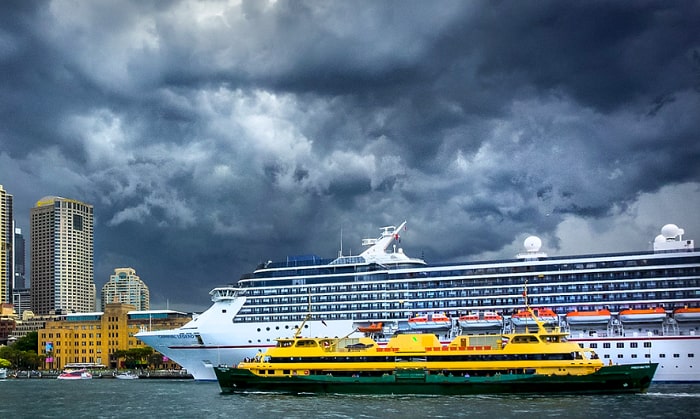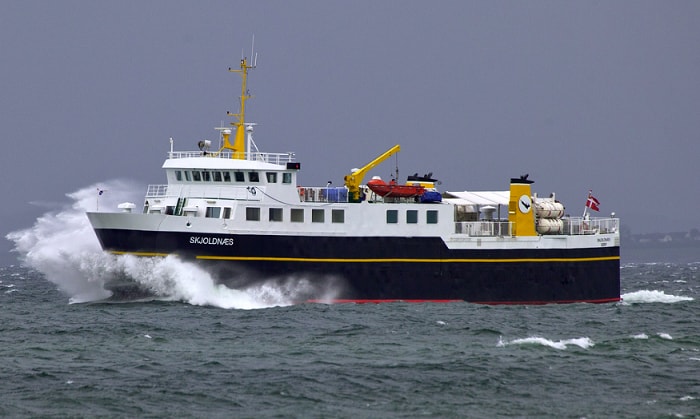Which safety precaution should be taken first by a boat operator when boating in stormy weather? Initially, the captain ought to make sure that everyone on board is wearing a USCG-approved life jacket. For more information on what measures needed to be taken, check out the detailed guide below.
Table of Contents
Which Safety Precaution Should Be Taken First by a Boat Operator When Boating in Stormy Weather?
As a boat operator, you are responsible for the safety of the passengers on board. Do not attempt to boat in stormy weather. Check the local forecast before boating to make sure the weather is clear; avoid heavy fogs or strong winds.
However, sometimes the weather changes without warning when hunting from a boat and the next thing you know is finding yourself out on the water, in the middle of a storm. If you see a thunderstorm approaching, don’t freak out! The best course of action is to remain calm.
Boating in stormy weather can be dangerous which requires you to take precautionary steps to ensure everyone on the boat is safe and sound through the hazard.
- First things first, make sure to have all passengers wear life jackets that are USCG-approved and remain in good condition. Double-check to ensure the life jackets are fitted and properly working.
- Next, secure all hatches and ports to avoid swamping. Then, have all passengers line up along the centerline to stabilize the boat as well as prevent the chance of them being thrown up and down. After that, you’d want to secure any movable objects and equipment so they stay in place when the vessel is shaky.
Tips for Boating in Stormy Weather
- Head up, and be aware of your surroundings. Keep an eye on the water to avoid any floating debris and other boats in sight. Visibility can be temporarily lost; when that happens, try to maintain a slow path until it improves.
- Reduce the speed, and continue to ride with a forward movement. Even though the goal is to get back to the dock as soon as possible, once waves reach a certain height, it is vital for the boat operator to match the speed of the vessel to the speed of the waves.
Riding at high speed when the waves are choppy may result in too much water intake, increasing the chance of your boat capsizing.
- Have the navigation lights on. The rain can reduce your visual as well as other boaters; having the lights on is the least you can do to inform other boat operators that you’re also on the water.
- Pay attention to how the waves are behaving. They help tell a lot about the current situation of the storm as well as whether the hazard is coming to an end or not.
Also, pay close attention to the wind directions or any signs for the weather condition worsening.
- Monitor the weather conditions through radio used for emergencies if all other devices cannot connect.
FAQs
When you are boating on a lake and the weather turns bad, what should you do?
If the shore is well in sight, there’s no need to be worried. Otherwise, if the shore is nowhere to be seen, follow the instructions mentioned above when boating in stormy weather.
You must stay alert and sober while boating; a certified boater knows that not all storms are the same and different means of approaches are required to handle each situation.
When caught in severe weather, how should you maneuver your vessel?
It helps to maneuver the boat at an angle of 45 degrees to the waves when caught in severe weather while boating. By doing this, you’re riding the vessel with more stability and control, even in turbulence.
Additionally, you wouldn’t want to speed up but rather do the complete opposite – reduce the speed. This helps lessen the chance of the boat being swamped by large waves and capsizing. Also, try to keep the vessel above the water level for the same outcome.
Conclusion
Which safety precaution should be taken first by a boat operator when boating in stormy weather? You should have the answer by now!
It is important to remain calm throughout the ride to safely get through the situation. Boating can be a fun, recreational activity should you come in prepared with the right situation handling experience. Thank you for reading, and have fun boating!

Ten years of enjoying countless trips on boats never made me love them any less! So I am here to put all those experiences into good use for other boaters who want to have a safe and fun trip with their friends and families.



